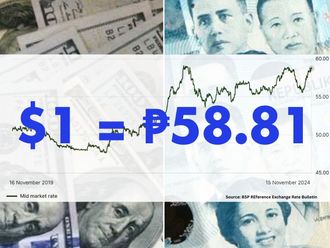Bratislava: Slovakia’s auto sector is speeding into high gear despite Eurozone’s hard times, making it the world’s top per-capita carmaker and fuelling the best growth in the crisis-struck 17-nation currency bloc.
While leading French auto-maker PSA Peugeot Citroen recently announced it was shutting a plant and slashing 8,000 jobs at home, the company’s Slovak branch has hired 900 new workers.
A Eurozone member since 2009, Slovakia is home to three sprawling foreign car plants run by Germany’s Volkswagen, France’s PSA Peugeot Citroen and South Korea’s Kia.
Plans call for overall production to soar to 780,000 vehicles this year from 639,763 in 2011, despite gloomy growth forecasts for much of Europe.
The automotive sector employs almost 72,000 people in this country of 5.4 million people and accounts for 39 per cent of total Slovak output.
The ex-communist state is also expected to lead Eurozone growth with a 1.8-per cent expansion this year, in sharp contrast to the 0.3-per cent contraction forecast by the European Commission for the Eurozone as a whole.
When the global crisis hit in 2008, Slovakia’s auto assembly lines slowed as demand slumped in Western Europe causing output to shrink by 4.9 per cent the following year.
But since then, the car plants strategically shifted focus from large, pricey SUVs to the more thrifty compact models popular in hard times.
“The smaller and cheaper cars, produced in Slovakia, are ideal for times of crisis,” Slovak Academy of Sciences analyst Vladimir Balaz told AFP.
“To make cheaper cars and turn a profit, car-makers prefer countries with lower costs. Slovakia has a relatively cheap and skilled workforce and it’s well positioned in Central Europe to export to the less car-saturated Eastern European markets,” observes Vladimir Vano, an analyst with the Volksbank.
Slovakia’s 2009 adoption of the euro also gives it a comparative advantage over fellow EU-neighbours Hungary and the Czech Republic, enabling investors to avoid currency conversion costs.
“Even if car producers faced lower demand, they would try to curb production abroad and maximise output in Slovakia,” argues Vano, citing cost advantages.
“Slovakia’s strength is that the car plants here represent their companies’ most modern plants worldwide,” adds Jozef Uhrik, head of the country’s Automotive Industry Association.
Attracting investment
France’s PSA Peugeot Citroen rolls out the Citroen C3 and the new Peugeot 208 at its site near Trnava in western Slovakia.
Boasting 3,500 employees, PSA launched a third shift earlier this year and is expected to assemble a whopping 300,000 cars in 2013, in stark contrast to its cuts elsewhere in Europe.
On the heels of plans to close a plant in France, the company also said this week it would shed 345 jobs from its Czech-based car maker TPCA, a joint venture with Japan’s Toyota which had employed 2,800.
Although it expects a 0.5 per cent recession this year, Slovakia’s closest neighbour the Czech Republic also boasts a booming auto sector.
Home to three big plants run by Skoda Auto, a Czech unit of the German giant Volkswagen, South Korea’s Hyundai, and TPCA, the country saw a record-high 662,529 cars roll off the production line in the first half of this year.
Meanwhile, German car giant Volkswagen intends to invest 1.5 billion euros (Dh6.69 billion) in Slovakia, adding 500 jobs to the more than 8,400 already on its production line here.
Volkswagen, which rolls out the Volkswagen up!, Skoda Citigo and SEAT Mii at its Bratislava plant and also produces the high-end Touareg, Audi Q7 and Porsche Cayenne models, is expected to produce at a full annual capacity of 400,000 cars over the next two years.
South Korea’s Kia, which runs a modern plant near Zilina, northern Slovakia, making Kia cee’d, Kia Sportage and Kia Venga models, also plans to reach full production capacity of 300,000 cars in 2013.
With an open, export-based economy driven by foreign demand, Slovakia is pinning its hopes on smooth sales in EU and Eurozone powerhouse Germany, expected to peg 0.7 per cent growth this year.
“Twenty per cent of Slovakia’s exports go to Germany and other core Eurozone countries, while exports to debt-troubled peripheral countries are low,” Vladimir Vano observes.
“Should Germany face a worse scenario, Slovakia would go downhill too,” Vladimir Balaz cautioned.












